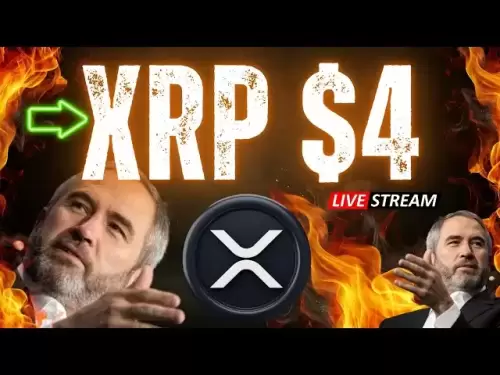-
 Bitcoin
Bitcoin $118300
-1.72% -
 Ethereum
Ethereum $3591
-0.69% -
 XRP
XRP $3.478
-3.53% -
 Tether USDt
Tether USDt $1.001
-0.01% -
 BNB
BNB $737.7
-0.54% -
 Solana
Solana $177.3
-2.40% -
 USDC
USDC $0.9999
-0.01% -
 Dogecoin
Dogecoin $0.2538
7.04% -
 TRON
TRON $0.3256
-0.85% -
 Cardano
Cardano $0.8332
-3.48% -
 Hyperliquid
Hyperliquid $44.80
-3.30% -
 Stellar
Stellar $0.4672
-6.09% -
 Sui
Sui $3.828
-5.98% -
 Chainlink
Chainlink $18.15
-3.41% -
 Hedera
Hedera $0.2655
-7.16% -
 Bitcoin Cash
Bitcoin Cash $517.5
-0.64% -
 Avalanche
Avalanche $23.89
-2.37% -
 Shiba Inu
Shiba Inu $0.00001519
-0.45% -
 UNUS SED LEO
UNUS SED LEO $8.973
0.13% -
 Toncoin
Toncoin $3.211
-2.54% -
 Litecoin
Litecoin $103.5
-3.58% -
 Polkadot
Polkadot $4.313
-3.90% -
 Uniswap
Uniswap $10.31
0.67% -
 Monero
Monero $325.4
-2.88% -
 Bitget Token
Bitget Token $5.049
3.51% -
 Ethena USDe
Ethena USDe $1.002
0.04% -
 Pepe
Pepe $0.00001346
-2.96% -
 Dai
Dai $0.9999
-0.02% -
 Aave
Aave $322.1
-2.93% -
 Bittensor
Bittensor $411.9
-4.70%
Litecoin mining tutorial for beginners
To maximize Litecoin mining profits, consider cloud mining services that offer access to powerful hardware without upfront hardware purchase and maintenance costs.
Jan 09, 2025 at 09:02 pm

Litecoin Mining Tutorial for Beginners: A Comprehensive Guide to Profitable Litecoin Mining
Key Points:
- Understanding the Basics of Litecoin Mining
- Choosing the Right Mining Hardware
- Setting Up a Litecoin Mining Rig
- Joining a Mining Pool
- Troubleshooting Common Mining Issues
- Maximizing Mining Profits
- Sustainable Mining Practices
Understanding the Basics of Litecoin Mining
Litecoin mining is the process of verifying and adding transaction data to the Litecoin blockchain. Miners use specialized computer hardware to solve complex mathematical puzzles to secure the Litecoin network and earn rewards in the form of Litecoin (LTC). The Litecoin mining process consumes significant amounts of electricity and computational power.
Choosing the Right Mining Hardware
The profitability of Litecoin mining depends on the efficiency of your mining hardware. Consider the following factors when choosing mining hardware:
- hash rate: The higher the hash rate, the more mining power you have.
- power consumption: Lower power consumption reduces operating costs.
- price: The cost of the hardware should fit within your budget.
Popular mining hardware options include:
- ASIC Miners: Specialized hardware designed for Litecoin mining with high hash rates but high power consumption.
- GPUs: Graphics processing units (GPUs) can be used for Litecoin mining but have lower hash rates than ASICs.
- CPUs: Central processing units (CPUs) can also mine Litecoin, but they are the least efficient option.
Setting Up a Litecoin Mining Rig
Once you have chosen your hardware, you need to assemble your mining rig:
- Install mining software: Choose reputable mining software like Litecoin Miner or Awesome Miner.
- Configure mining hardware: Connect your hardware to your computer and set up the mining parameters.
- Join a mining pool: Joining a mining pool increases your chances of earning mining rewards.
Joining a Mining Pool
Mining pools combine the resources of multiple miners to increase their chances of finding blocks and earning rewards. When a block is found, the pool distributes the rewards to participating miners based on their contribution.
To join a mining pool:
- Choose a reputable mining pool: Look for pools with a good track record and low fees.
- Create a pool account: Follow the pool's instructions to create an account.
- Configure your mining software: Set your mining software to connect to the pool using its server address and port.
Troubleshooting Common Mining Issues
- Overheating: Ensure your mining hardware has proper ventilation and cooling systems.
- Hardware failure: Identify the faulty component and replace it.
- Internet connection issues: Check your internet connection and ensure it is stable.
- Software problems: Check for software updates and reconfigure your mining software if necessary.
Maximizing Mining Profits
- Optimize hardware settings: Experiment with different mining parameters to find the most efficient settings for your hardware.
- Join a large mining pool: Larger pools have a higher probability of finding blocks.
- Monitor pool fees: Choose pools with low fees to maximize your earnings.
- Consider cloud mining: Cloud mining services allow you to rent mining hardware without the costs of purchasing and maintaining it yourself.
Sustainable Mining Practices
- Use energy-efficient hardware: Choose mining hardware with low power consumption to reduce your carbon footprint.
- Use renewable energy sources: Consider using solar or wind power to power your mining rig for more sustainable mining.
- Dispose hardware responsibly: Recycle old mining hardware to minimize environmental impact.
FAQs:
Q: Is Litecoin mining profitable?
A: The profitability of Litecoin mining depends on factors such as the hardware used, the cost of electricity, and the exchange rate for LTC. Consider the potential profitability before investing in mining hardware.
Q: How long does it take to mine one Litecoin?
A: The time it takes to mine one Litecoin varies depending on the hash rate of the miner and the difficulty of the Litecoin blockchain. On average, it takes around 2.5 minutes to find a block and earn a reward of 12.5 LTC.
Q: Are there risks associated with Litecoin mining?
A: Yes, there are risks associated with Litecoin mining, such as hardware failure, market volatility, and the possibility of losing your investment due to technological advances or changes in mining difficulty.
Q: What other cryptocurrencies can be mined profitably?
A: Other profitable cryptocurrencies to mine include Bitcoin, Ethereum Classic, Dogecoin, and Monero. However, the profitability of each cryptocurrency can vary based on market conditions.
Disclaimer:info@kdj.com
The information provided is not trading advice. kdj.com does not assume any responsibility for any investments made based on the information provided in this article. Cryptocurrencies are highly volatile and it is highly recommended that you invest with caution after thorough research!
If you believe that the content used on this website infringes your copyright, please contact us immediately (info@kdj.com) and we will delete it promptly.
- Crypto Market Mania: Ethereum Surges, Trump's Company Cashes In!
- 2025-07-19 12:30:13
- NFT Trading, Users, and the Quest for a Comeback: What's the Deal?
- 2025-07-19 12:30:13
- Baby Sex: Unpacking the Influencing Factors and Birth Sex Trends
- 2025-07-19 12:50:13
- Satoshi Nakamoto, Bitcoin, and Bill Gates: A New World Order?
- 2025-07-19 13:15:12
- Trump's GENIUS Act: A New Era for Stablecoin Regulation?
- 2025-07-19 12:50:13
- Render Crypto, DePIN, and GPU Rendering: The Future is Now, Baby!
- 2025-07-19 12:55:13
Related knowledge
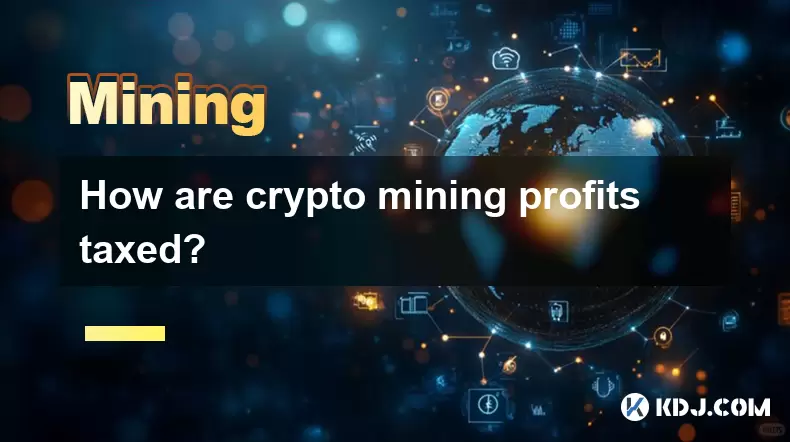
How are crypto mining profits taxed?
Jul 14,2025 at 12:28am
Understanding Cryptocurrency Mining and TaxationCryptocurrency mining involves validating transactions on a blockchain network and earning rewards in ...
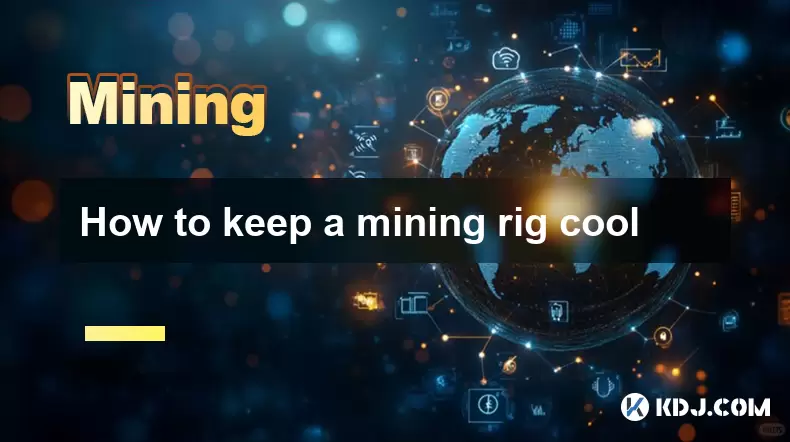
How to keep a mining rig cool
Jul 12,2025 at 01:42pm
Understanding the Importance of Cooling in Mining RigsCryptocurrency mining is an intensive process that places heavy demand on hardware components, p...
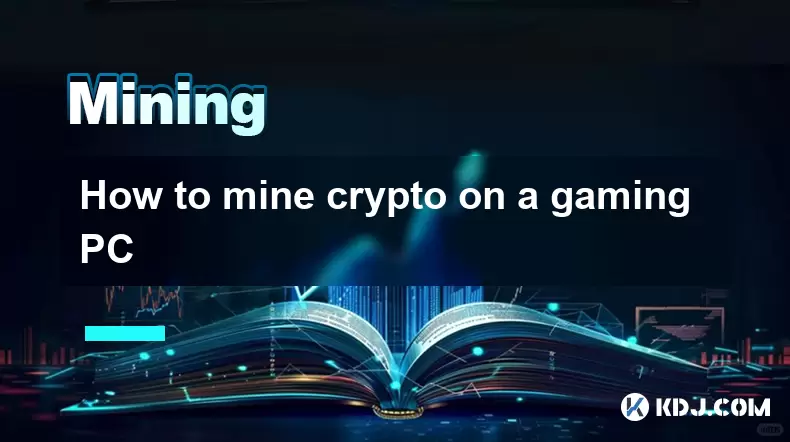
How to mine crypto on a gaming PC
Jul 16,2025 at 12:00pm
What is Crypto Mining on a Gaming PC?Crypto mining involves using your computer's processing power to validate transactions on a blockchain network. A...
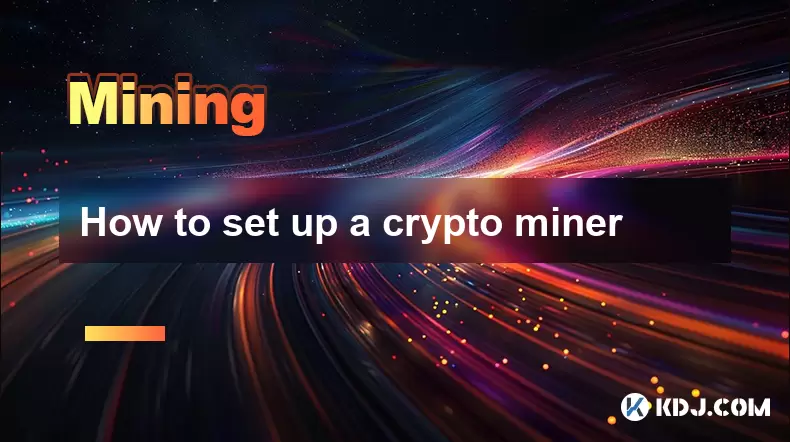
How to set up a crypto miner
Jul 16,2025 at 09:14am
Understanding Ethereum Gas Fees: What Are They and How Do They Work?Ethereum gas fees are a fundamental aspect of the network, representing the cost r...
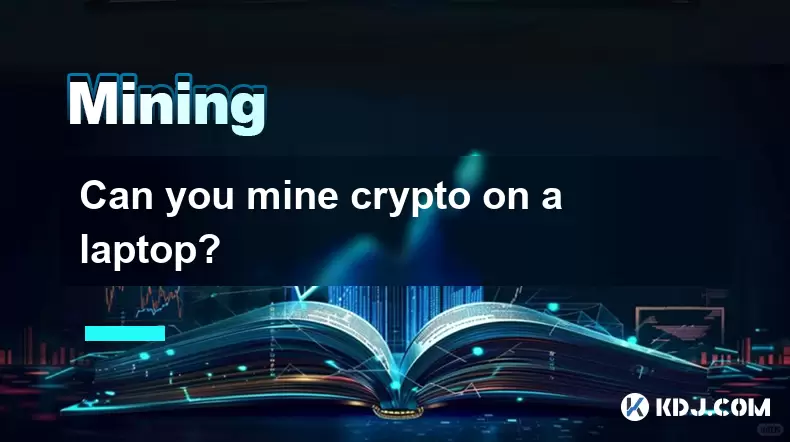
Can you mine crypto on a laptop?
Jul 16,2025 at 02:21am
Is It Feasible to Mine Cryptocurrency on a Laptop?Mining cryptocurrency on a laptop is technically possible, but feasibility depends heavily on the ha...
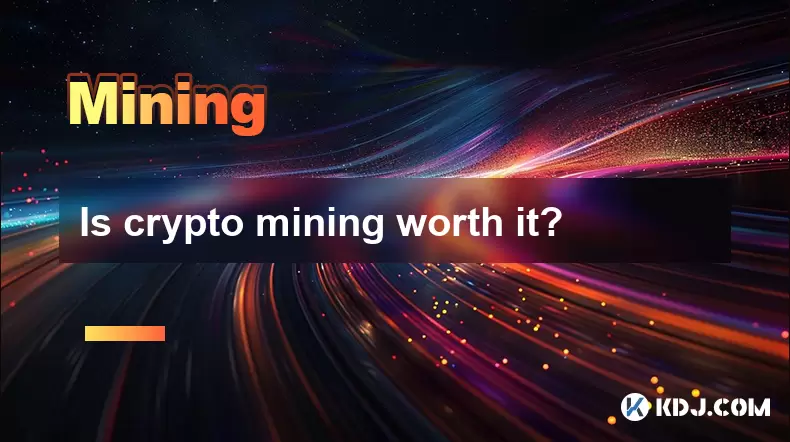
Is crypto mining worth it?
Jul 16,2025 at 01:21am
Understanding the Basics of Crypto MiningCrypto mining refers to the process of validating transactions on a blockchain network by solving complex mat...

How are crypto mining profits taxed?
Jul 14,2025 at 12:28am
Understanding Cryptocurrency Mining and TaxationCryptocurrency mining involves validating transactions on a blockchain network and earning rewards in ...

How to keep a mining rig cool
Jul 12,2025 at 01:42pm
Understanding the Importance of Cooling in Mining RigsCryptocurrency mining is an intensive process that places heavy demand on hardware components, p...

How to mine crypto on a gaming PC
Jul 16,2025 at 12:00pm
What is Crypto Mining on a Gaming PC?Crypto mining involves using your computer's processing power to validate transactions on a blockchain network. A...

How to set up a crypto miner
Jul 16,2025 at 09:14am
Understanding Ethereum Gas Fees: What Are They and How Do They Work?Ethereum gas fees are a fundamental aspect of the network, representing the cost r...

Can you mine crypto on a laptop?
Jul 16,2025 at 02:21am
Is It Feasible to Mine Cryptocurrency on a Laptop?Mining cryptocurrency on a laptop is technically possible, but feasibility depends heavily on the ha...

Is crypto mining worth it?
Jul 16,2025 at 01:21am
Understanding the Basics of Crypto MiningCrypto mining refers to the process of validating transactions on a blockchain network by solving complex mat...
See all articles

























